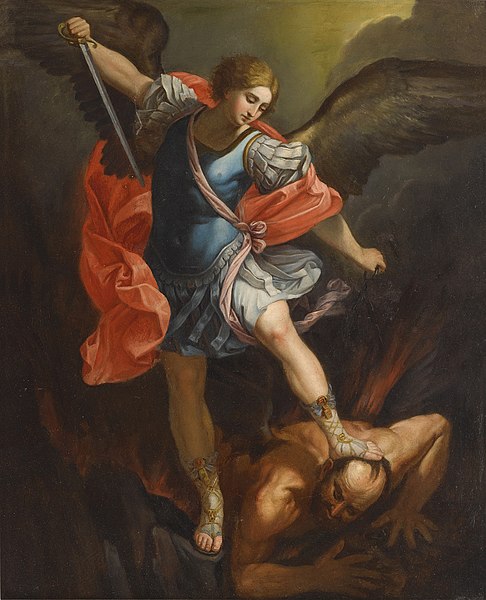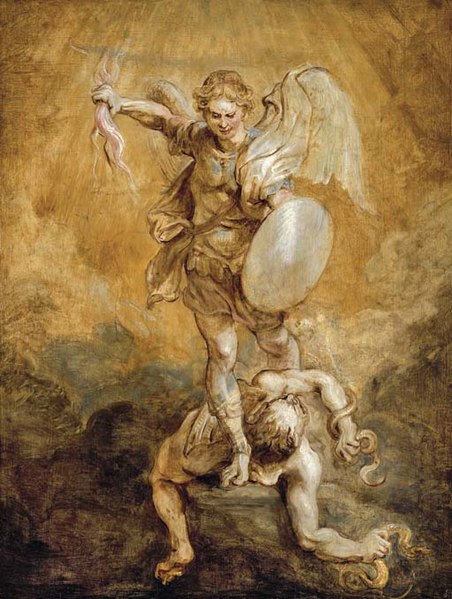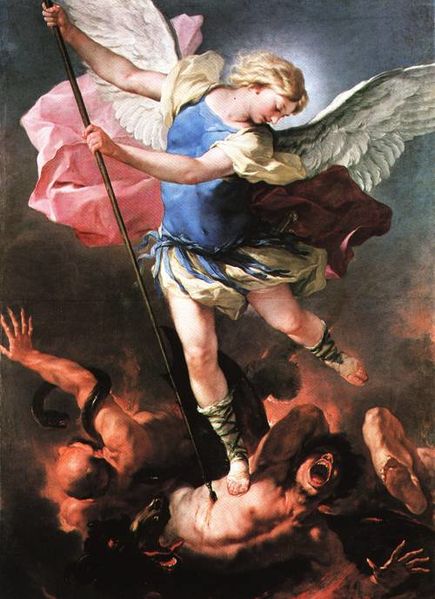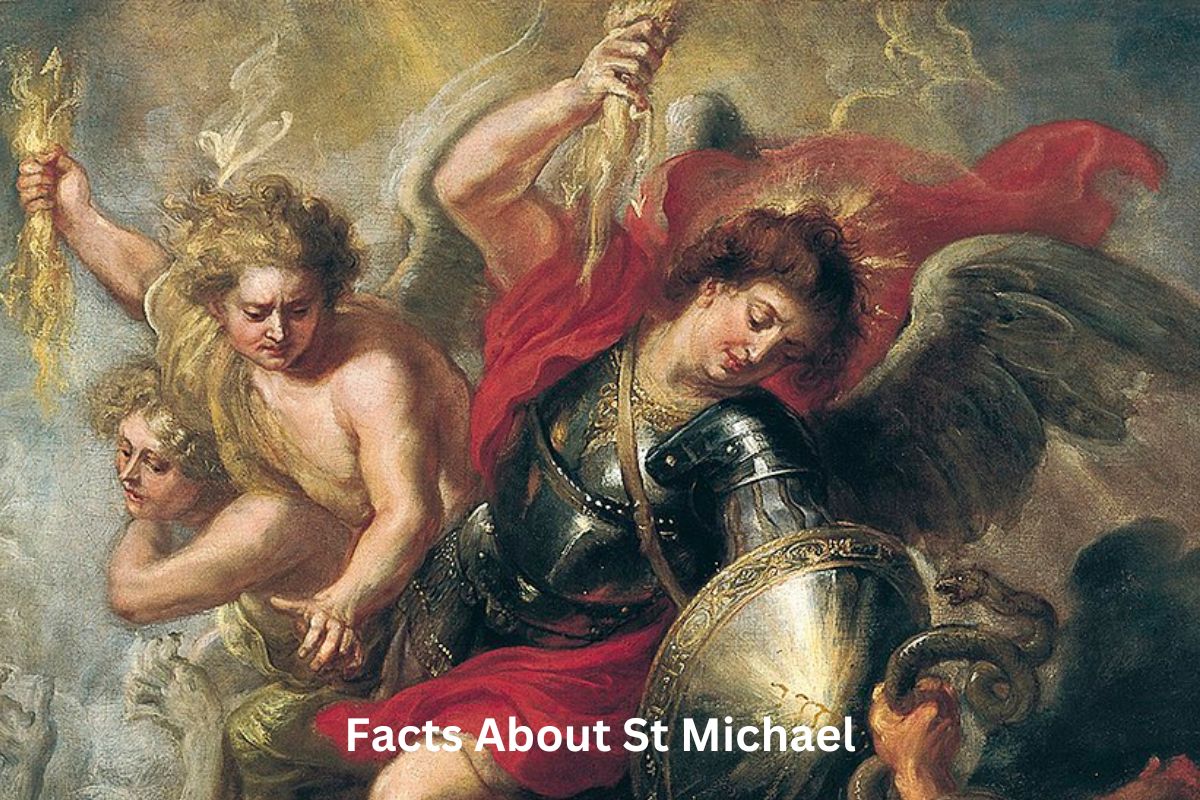St. Michael, often referred to as the Archangel Michael, holds a significant place in various religious traditions, including Christianity, Judaism, and Islam. He is known as a defender of righteousness and a protector against evil forces.
St. Michael’s Feast Day, Michaelmas, is celebrated on September 29th in the Western Christian tradition. His biblical references depict him as a powerful angelic figure engaged in spiritual battles.
Additionally, he is the patron saint of various groups and professions, and his imagery has left a lasting mark on art, architecture, and popular culture worldwide.
St Michael Facts
1. St. Michael is also known as the Archangel Michael
St. Michael is often referred to as the Archangel Michael in Christian tradition. The term “archangel” comes from the Greek words “arche” (meaning chief) and “angelos” (meaning messenger), signifying his prominent role among the angels.
Also Read: Facts About Saints
As an archangel, St. Michael is considered one of the highest-ranking and most powerful angels in Christian angelology. He is believed to serve as a chief messenger or herald of God’s divine messages and commands.

2. He is a defender of righteousness and protector against evil
St. Michael is renowned for his role as a defender of righteousness and a protector against evil forces. This perception is rooted in various biblical and historical accounts.
In Christian tradition, St. Michael is often depicted as a warrior angel, wielding a sword or spear. This imagery symbolizes his duty to combat and overcome the forces of darkness, particularly in spiritual battles against Satan and his minions.
Also Read: Saint Patrick Facts
Many individuals turn to St. Michael in times of adversity, seeking his intercession for protection and strength in the face of temptation and evil influences.
3. His feast day, Michaelmas, is celebrated on September 29th
The Feast of St. Michael and All Angels, commonly known as Michaelmas, is a significant liturgical observance in the Western Christian calendar.
It is celebrated on September 29th each year, and it marks a day to honor St. Michael’s role in the spiritual battle against evil and his leadership among the heavenly host.
Historically, Michaelmas was also a time for various secular activities, including the settling of debts and the hiring of servants, as it coincided with the end of the harvest season in some regions.
4. St. Michael is mentioned in the Bible in the Book of Daniel and Revelation
St. Michael is mentioned in the Bible in several passages, highlighting his significance in religious texts.
In the Book of Daniel (Daniel 10:13, 12:1), St. Michael is described as “one of the chief princes” and a protector of the people of Israel. He is depicted as an angelic figure involved in spiritual battles.
Also Read: Saint Gabriel Facts
The Book of Revelation (Revelation 12:7-9) portrays St. Michael’s role in a celestial conflict where he leads the angels in a battle against the dragon (often interpreted as Satan) and his rebellious angels. This event symbolizes the victory of good over evil.

5. He is often considered the leader of the heavenly host of angels
St. Michael is often considered the leader of the heavenly host of angels. This leadership role signifies his authority and prominence among angelic beings.
In various religious traditions, it is believed that St. Michael plays a central role in organizing and directing the activities of other angels, especially in matters related to divine missions, protection, and defense.
6. St. Michael is the patron saint of soldiers, police officers, and paratroopers
St. Michael is the patron saint of several groups and professions, reflecting his role as a protector and defender.
Some of the groups and individuals who consider him their patron include:
- Soldiers: St. Michael is regarded as a patron saint of soldiers due to his image as a warrior angel. Soldiers often turn to him for courage and protection during times of conflict and war.
- Police Officers: He is also a patron saint of law enforcement agencies and police officers. His intercession is sought for safety and guidance in their duties.
- Paratroopers: St. Michael is associated with paratroopers, who often face particularly challenging and perilous situations. His protection is invoked for safe landings and successful missions.
- Others: St. Michael is also seen as a protector of individuals, nations, and those who seek his intercession for various forms of protection, both physical and spiritual.

7. He is depicted in art as a winged angel in armor with a sword
St. Michael is commonly depicted in art and iconography, and these visual representations often carry symbolic meaning.
He is typically portrayed as a powerful and majestic angel, often shown in shining armor with wings and a sword. The sword symbolizes his role as a warrior against evil forces.
Another common image of St. Michael is him standing triumphantly with his foot on a defeated devil or dragon. This image symbolizes the victory of good over e
8. St. Michael is significant in Judaism and Islam as well as Christianity
St. Michael’s significance extends beyond Christianity and is recognized in other major Abrahamic religions.
In Judaism, he is sometimes associated with the angelic protector of Israel, and there are references to the “angel of the Lord” who appears in the Hebrew Bible.
In Islam, St. Michael is known as Mikail (or Mīkāl in Arabic). He is considered one of the four archangels in Islamic tradition, and his role is similar to that in Christianity, delivering God’s messages to the prophets.
9. Many churches and locations are dedicated to St. Michael
St. Michael has left his mark on geography and architecture with numerous places and structures dedicated to him.
One of the most famous of these is Mont Saint-Michel, a stunning island abbey located in Normandy, France. It is dedicated to St. Michael and has been a site of pilgrimage for centuries.
Many churches and cathedrals around the world are also dedicated to St. Michael, reflecting his importance in religious architecture and devotion.
10. He has inspired various works of art and fiction in pop culture
St. Michael’s iconic image and his role as a heroic figure have influenced various forms of popular culture, including literature, movies, and video games.
He often appears in works of fiction as a symbol of hope and a protector against supernatural evil. For example, he is a recurring character in books like Dan Brown’s “Angels & Demons.”
St. Michael’s imagery has also been used in music, with references to him appearing in songs by artists from different genres.
